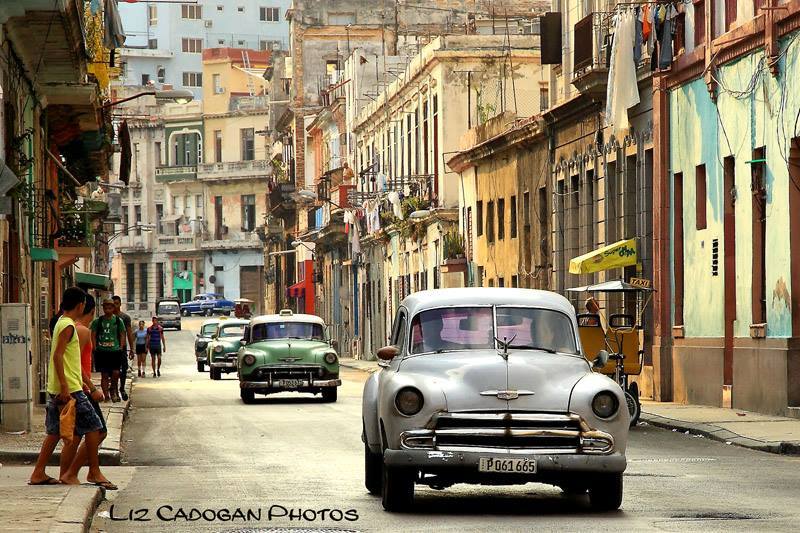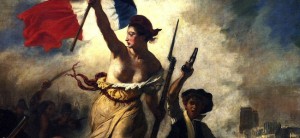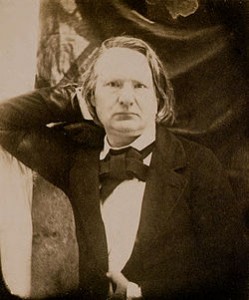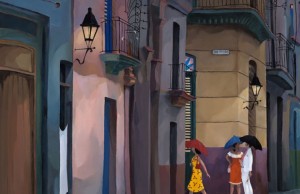CiroBianchiRoss/InternetPhotos/www.thecubanhistory.comTras las huellas francesas en Cuba.THe Cuban History, Hollywood.Arnoldo Varona, Editorla Habana, Cuba. Cuba en Fotos.

TRACING THE FRENCH FOOTSTEPS IN CUBA.
The ideals of “Freedom. Equality and Fraternity “proclaimed by the French Revolution, moved from early revolutionary and anti-colonial movement Numerous island is the group of Cuban independence fighters who finds refuge in France, and so will under the Machado dictatorship. The first sentenced to death for the crime of disloyalty was sent by Joseph Bonaparte to subvert order in the colony.

Since then, and until well into the first half of the twentieth century, Paris, not New York, is the Mecca of the Cuban aristocracy and bourgeoisie. One night at the Tuileries, Napoleon III was shed, dead love, at the foot of the Cuban Serafina Montalvo, III Countess of Fernandina, reputed to be one of the most beautiful Cuban of his time. Marta Abreu and Luis Estévez Romero and die in Paris.
The mansion becomes Rosalia Abreu, by decision of its owner,
MORE PHOTOS OF THE CASA CUBA AT LA SORBONNE UNIVERSITY AT : https://www.google.fr/maps/place/Fondation+ABREU+DE+GRANCHER/
ON THE FACADE WE CAN SEE THE CUBAN SIX PROVINCES BLASONS
La Casa Cuba, for Cuban hostel students studying at the Sorbonne. But many foreign or nationals of France also used the Casa Cuba . la Maison Cuba for it provide many amenities not found in even private homes like showers in each room.
They also have home in Paris Catalina Lasa and her husband Juan Pedro Baró. The Saint John-Perse poet, Nobel Prize for Literature, hold, closer in time, an affair with a young Cuban distinguished, Lilith Sanchez Abreu, to which he dedicated his poem A foreign.
In the Paris residence of the Cuban María de las Mercedes Santa Cruz y Montalvo, Countess of Merlin, who was loving, it is said, of Prince Jerome Bonaparte, alternating Victor Hugo, Lamartine and Musset. Paris is the setting for the great initial success of José Claudio Brindis de Salas, the black Paganini, as it was called, and there another Cuban, José White, author of La bella cubana, come to replace Jean Alard Delphine in his chair at the Paris Conservatoire. Modern painting begins in Cuba after the Parisian stay of Víctor Manuel, Alejo Carpentier and surreal stories written in French until you feel the urgent need to express what American in his work.
 VICTOR HUGO IN 1853
VICTOR HUGO IN 1853
Bums will dawn in Paris painter Carlos Enríquez and poet Felix Pita Rodriguez before he was a legion of Cuban writers and artists who dazzle with Sartre and his pages on intellectual commitment, are sympathetic to the Algerian war of liberation and get excited about the cinema of the New Wave.
MORE PHOTOS OF THE CASA CUBA AT LA SORBONNE AT : https://www.google.fr/maps/place/Fondation+ABREU+DE+GRANCHER/
THE FRENCH IN HABANA.

San Isidro Quarters, Habana.
There was a time in Cuba that French prostitutes were preferred. More elegant and fragrant, less vulgar, rose as teachers in practices such as oral sex then still unknown among Cuban lovers. Had Austrian, Italian, Canadian, Belgian, German, French … but they were all for the patio. One of them, the little Berta, was the trigger for the war in the Havana neighborhood of San Isidro held French and Cuban pimps. In that war-called war of portañuelas-were killed and Alberto Yarini Lotot Louis, King of Cuban pimps.
CiroBianchiRoss / InternetPhotos / www.thecubanhistory.comAfter the French footprints in Cuba.THe Cuban History, Hollywood.Arnoldo Varona, EditorThe French footprint in Santiago de Cuba.https://www.hicuba.com/articulos/huella-francesa-santiago-cuba.php 19th century French coffee plantationSantiago de Cuba
19th century French coffee plantationSantiago de Cuba
After the Haitian revolution of 1791 many French settlers and their slave endowments take refuge in the eastern part of the island in the provinces of Guantanamo and Santiago de Cuba, bringing these significant benefits for the eastern region.
The first flow of immigration, of the four that are registered, had a significant magnitude between 1800 and 1809, it is estimated that more than 20 thousand individuals of all social classes arrived in the eastern part of the country, Baracoa and Santiago de Cuba, being The period June - August 1803, the most prolific, known as the great exodus, where the governor of the region Colonel Sebastián Kindelán, records in one of his writings the arrival of 19306 individuals in 344 vessels to the port of Santiago de Cuba.
The town soon felt the full impact of the French presence, the city began to emerge with its own brightness never seen before, the French were industrious and hardworking people of different professions, merchants, landowners, military, employees, artists, filibusters, etc.
Port trade, legal and illegal, first flourished, then the application of the plantation economy in the area. The planting system began to change the appearance of the area, emerging roads, roads, the port begins to come alive, development rose impacting the spheres of the city and the countryside.
In the city, trade developed rapidly, a large number of French opened shops that lasted for several generations, technical scientific advances were introduced, among which coffee growing stands out. In the urban sphere, culture and commerce are the most significant elements that transcend the resident population.
In the commercial and economic aspect they left an important mark, since in the period from 1800 to 1868, 260 economic societies with participation of French capital are registered only in the territory of Santiago.
During this migration process, there are two types of settlements in the region, on an urban scale the French contributed to the densification of the plot in the different neighborhoods of the city, the result of this phenomenon was the urbanization of the upper part of the city, consolidating the French quarter the Tivoli, not having a direct impact on the architecture that had been developing in the city. The greatest social impact was appreciated in the culture.
The Tivoli . El Tivolí neighborhoodSantiago de Cuba
El Tivolí neighborhoodSantiago de Cuba El Tivolí neighborhoodSantiago de Cuba
El Tivolí neighborhoodSantiago de Cuba
Neighborhood of the city of Santiago de Cuba that melts in itself the cultural syncretisms and ethnic exchanges of the Cuban nationality. It had an urban impulse in the heat of the French migration after the Haitian revolution in the late eighteenth and early nineteenth centuries. It belongs to the French memory in this south eastern city.
In the first half of the 18th century, the French built a Café Concert with a capacity for more than 300 people whom they called Le Tivolí, but later the word was "crushed to Santiago" as El Tivolí. And it was so strong that in a few years it became part of Santiago de Cuba. With the French, this high quarter was a symbol in the future of the town.
From it the bay is dominated and a good part of the mountains. Its streets lead to La Trocha, a famous and popular street for carnival parties. The staircase of Padre Pico, the most famous staggered street in Cuba, gives entrance to the center to the picturesque neighborhood, built on the hill of Corbacho, a name that honors a Galician merchant in the immediate vicinity of the place.
It was in the Tivoli where the popular Santiago carnival was born, and where for the first time the Chinese bugle was heard, a distinctive instrument of the Santiago conga. The manifestations of the French tomb are still preserved, a dance adapted by the blacks who remember the famous halls of Paris, already sifted by the drum and other typically African instruments that will be explained later.
Architecture . El Tivolí neighborhoodSantiago de Cuba
El Tivolí neighborhoodSantiago de Cuba Loma de los DesamparadosSantiago de Cuba
Loma de los DesamparadosSantiago de Cuba
Its layout has many peculiarities that typify it: the tall houses that face the sea, which look like eagle nests, according to Dr. Francisco Prats; its alleys and hills. One of the steepest is that of the Homeless, whose church of the same name stands on its top.
Wrought iron railings in the French southwest style on balconies and windows replaced wooden bars and balusters. This architecture of facades with a set of rhombuses and S is considered the most typical of the country, with corridors and hangers.
Among the neighborhood's contributions at that stage, there are health houses with nurses and doctors, elementary schools, some bilingual schools and academies for young women; Bakeries and candy stores with great bakers. Space where the refinement of the French culture was shown, acriollada to the Santiago atmosphere and the Spanish way.
Modus vivendi . French house room, 19th centurySantiago de Cuba
French house room, 19th centurySantiago de Cuba
The newcomers, mostly men of a remarkable culture, bearers of a cultural and political frame of reference different from the one existing in the capital of the Eastern Department, promoted a thriving colony that served as a catalyst for the process, as they would partly transform the infrastructure of the city and especially its nearby region, would disrupt their daily lives and contribute to the economic development and social and cultural awakening of this area, hereinafter original, of the great Caribbean island.
His modus vivendi and his tastes produced admiration in the majority of the members of Santiago society and, as everything admired tends to be imitated, fashions and tastes were acclimatized with some speed, as a legitimate practice where the recipients, consciously or unconsciously, they interpreted and adapted ideas and customs. The prominent intellectual José Antonio Portuondo asserted that an "[...] atmosphere of refined courtesy was imposed, which broke the colony's brown stubbornness and created a higher way of sensual refinement.
Indeed, all this consolidated a city with a new character, with more modern profiles. And it was within that urban plot where domestic constructions were developed that, like the rest of the Santiago buildings, were adapted to the topographic, climatic and seismic conditions of the area, showing four topological variants of facades: simple, hanging, corridor and balcony. These mansions were bearers of the economic power acquired by the preeminent social groups, who for their construction chose the areas of greater urban qualification that gave them prestige and differentiated as social class.
The stylistic image of these domestic constructions was marked by neoclassicism that, like the rest of the styles of the colonial era, was reinterpreted with popular wisdom, and should essentially be sought in interior and exterior decorative solutions. His clearest expressions were the increase in the strut, with which the buildings won in slenderness and sumptuousness; in the constructive and decorative carpentry of doors, windows, dividing elements and right feet; in the smithy, the ornamental details of facades and floors. Its interior spaces were expanded in order to respond to the different social activities deployed at the stage: dances, gatherings, banquets, concerts, and therefore a whole decorative intention on ceilings, walls and floors, as well as on furniture .
These details are particularly evident in the room, where the lavishness of the house overflowed as it was the space that best expressed the level reached by the family in the social pyramid.
Meanwhile, that high society, informed through travel and reading the changes that occurred in the old continent, showed in the passage to the nineteenth century a predisposition to improve the environments of their residences. New customs were promoted and the requirement of hygienic standards allowed the emergence of furniture that was part of everyday uses. Thus, "the people received the visitors in the room, the gentlemen had their studies, the ladies their dressers, the place where he slept was no longer simply a" room ", now it was a 'chamber'. That severe bourgeois rational ordination Roger Henri-Guerand speaks of determined that the house had a new planimetric organization, distributed in three large areas: a public space of representation - the hall, the saleta and the dining room - in which the spatial determinants, together with the furniture, were in charge of demonstrating the economic and social position of the inhabitants; a private one for family intimacy linked to the bedroom, the living room and the dressing room; and finally the excused spaces.
In the house the patio functioned as the planimetric shaper, surrounded by one or several galleries where the rooms were facing. It guaranteed the lighting of the different spaces and the collection of rainwater that was stored in large reservoirs with beautiful brooks, some plated in marbles with high quality decorative details. In its wrought iron davits, neoclassical decorative elements can be distinguished, testimony to the skill achieved by local blacksmiths. The greenery of this area was contributed by fruit trees and ornamental plants.
The proliferation of furniture and decoration, where the taste for refined objects became evident, was the response to the increase in activities carried out inside the house and to the economic boom experienced at that time. The insertion of French emigration - since the end of the 18th century - and its cultural influence on the local daily world also functioned as a catalytic element of this transformative process, even though it had to adapt certain ways of life to the specificities of the region, rather bequeathing the vital spirit of their culture and the concept of space treatment.
Other information of interest . Museum of the Clandestine Struggle Santiago de Cuba
Museum of the Clandestine Struggle Santiago de Cuba
The Tivoli neighborhood has among its attractions: the Museum of Clandestine Struggle, in homage to the Santiago fighters who received support and solidarity in that place during the war against the dictatorship of Fulgencio Batista (1952-1959), and the humble House in which the historic leader of the Cuban Revolution, Fidel Castro, lived between 1931 and 1933, when he was studying in Santiago de Cuba.
The Tivolí saw the birth of José Pepe Sánchez, author of the first bolero, Miguel Matamoros, Antonio Ñico Saquito and, more recently, the Painter Miguel Ángel Botalín. There was no lack of reason for Francisco Repilado, the famous Compay Segundo, saying that the Tivoli is a melting pot where the National War of Independence was created and the Son, Carnival and Chinese bugle were born.
Coffee plantations . 19th century French coffee plantationSantiago de Cuba
19th century French coffee plantationSantiago de Cuba
The rural area surrounding the city does not escape the influence exerted by the French, it is here where the wealth that impacts the city is forged, it was in the mountains of the Sierra Maestra where the economic revolution that contributed to the development of Santiago de Cuba began at the beginning of the 19th century, with the promotion of coffee plantation, as the main exponent of the plantation economy, which maintained the slave ideals for its operation. 84 coffee plantations are registered around the city using the favorable geographical conditions of the Sierra Maestra.
The French coffee plantation constituted the genesis of the phenomenon that caused the hatching of Santiago de Cuba in the 19th century, which set the guidelines for transforming the intricate mountains into heavenly places. After the sugar mills, coffee plantations are the most important establishments in Cuba, surpassing the second to the first in their beautiful appearance and careful work.
www.caribbeannewsdigital.com › noticia › huella-f...Translate this pageMay 7, 2014 - Sobre los enigmas y curiosidades de la historia de la huella francesa en Cuba expuso el periodista y escritor cubano Ciro Bianchi en la ...
Huella francesa en la cultura cubana Caribbean News Digital


 VICTOR HUGO IN 1853
VICTOR HUGO IN 1853 VICTOR HUGO IN 1853
VICTOR HUGO IN 1853

 19th century French coffee plantationSantiago de Cuba
19th century French coffee plantationSantiago de Cuba El Tivolí neighborhoodSantiago de Cuba
El Tivolí neighborhoodSantiago de Cuba El Tivolí neighborhoodSantiago de Cuba
El Tivolí neighborhoodSantiago de Cuba El Tivolí neighborhoodSantiago de Cuba
El Tivolí neighborhoodSantiago de Cuba Loma de los DesamparadosSantiago de Cuba
Loma de los DesamparadosSantiago de Cuba French house room, 19th centurySantiago de Cuba
French house room, 19th centurySantiago de Cuba Museum of the Clandestine Struggle Santiago de Cuba
Museum of the Clandestine Struggle Santiago de Cuba 19th century French coffee plantationSantiago de Cuba
19th century French coffee plantationSantiago de Cuba


No comments:
Post a Comment